Home office design: how to create the perfect space to work from home
Need to work from home? These home office design tips will ensure it is easy and productive

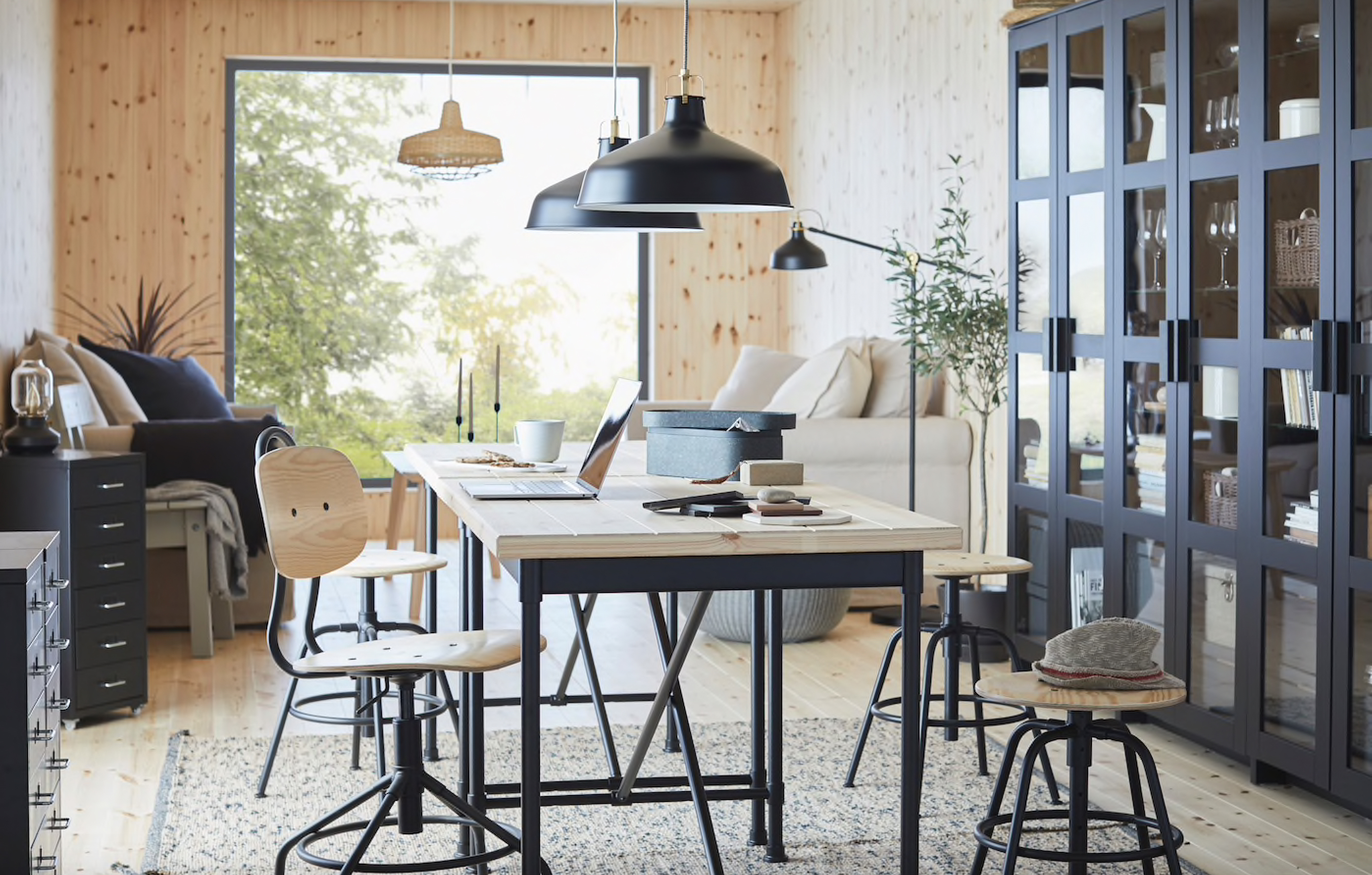
Nailing that home office design is so important, especially at the moment with so many of us working from home a lot more. So how do you create a space that ensures a productive atmosphere no matter what size space you are dealing with?
Start by thinking about the purpose of your home office. If you’ll be working in there on a daily basis, creating a different feel from the rest of your rooms may help you to focus, while a room that's part home office, part homework study, part home admin center might look better decorated to match the rest of your home – especially if it's part of an open plan scheme.
Whether it’s a dedicated room, a built-for-purpose garden room, or a small study space with big ambition, find lots of gorgeous home office ideas in our design gallery.
Choose a location that best suits your working style
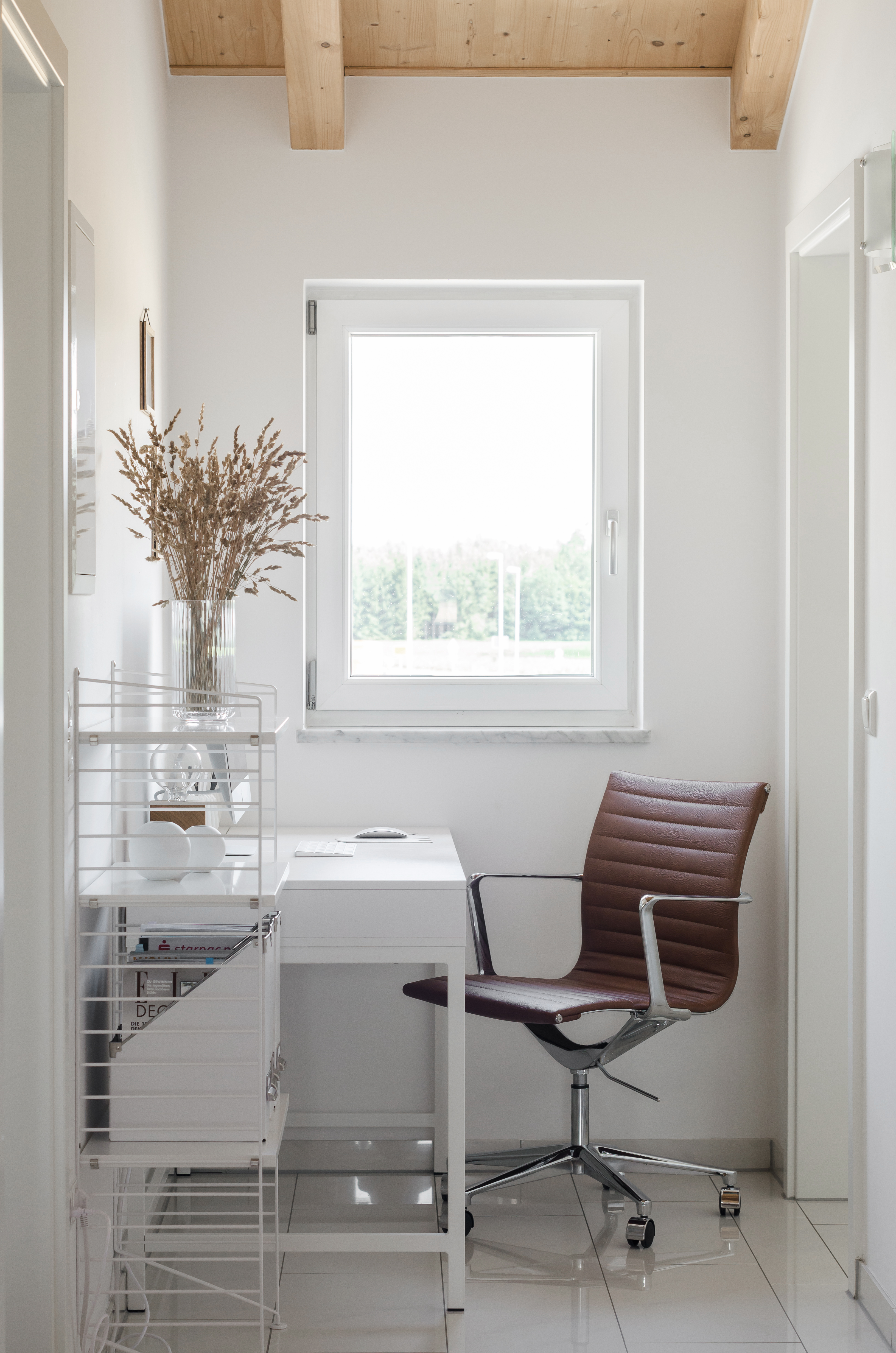
The first – and probably the most important – thing to think about when designing a home office is where your home office ought to be located. Consider your working style and the nature of your work, as well the needs of the people you live with.
If your work is solitary and requires quiet and privacy, a garden office room, garage conversion or home office in a loft conversion is most appropriate. If you are keen to add a garden office room, check out our expert guide to outbuildings and garden rooms.
On the other hand, if you run a small business from home while keeping an eye on children, you may need your workspace near the kitchen or sitting room, perhaps in an under-used dining room. An ideal solution in this case might be a cupboard workstation.
Or, if you simply don't have the space elsewhere, a spare bedroom or corner of a bedroom or living space can do the trick nicely, if well planned. Have a look through these small home office ideas for more inspiration.
Get small space home decor ideas, celeb inspiration, DIY tips and more, straight to your inbox!
What do you need in your home office?
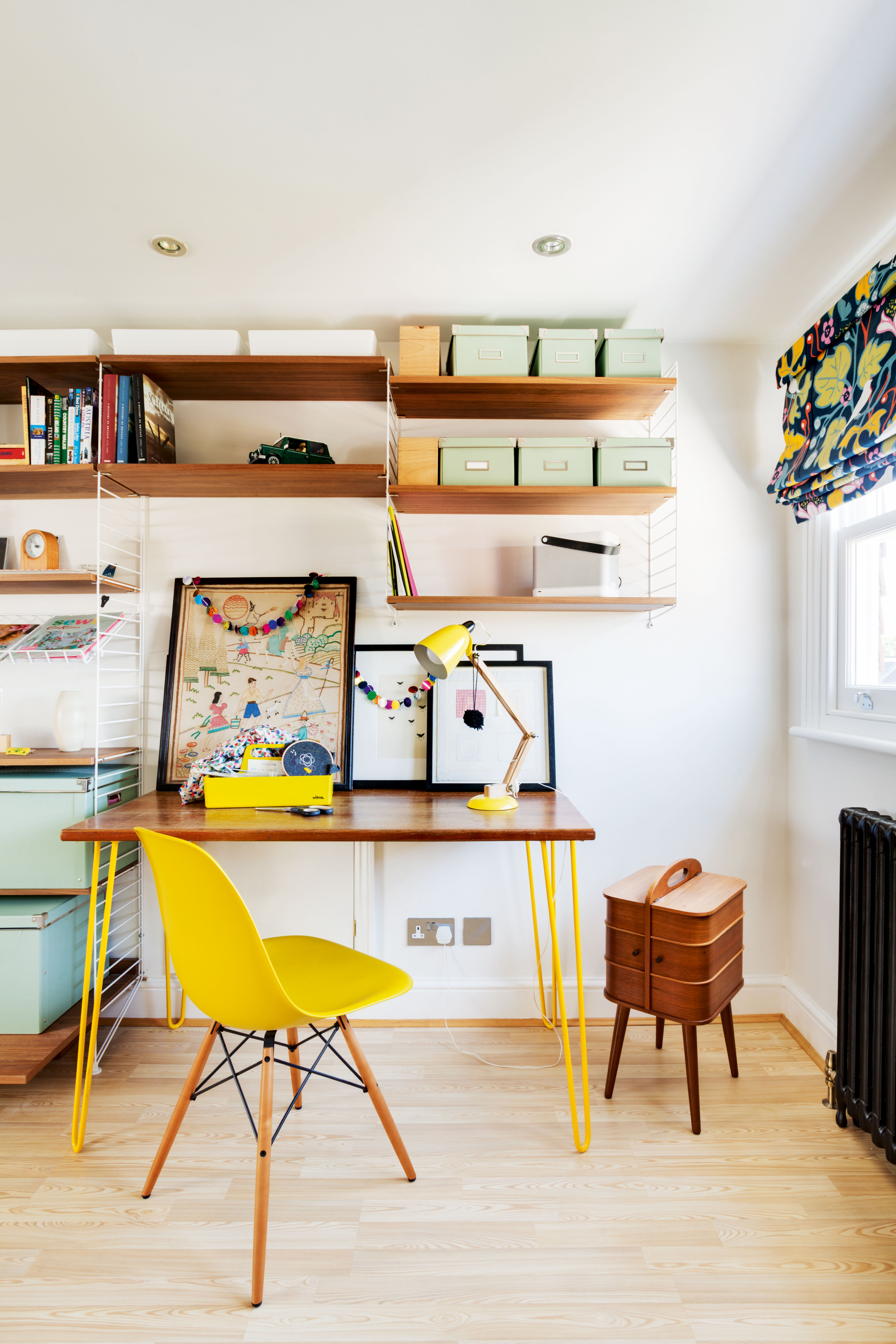
When designing a home office ask yourself a series of questions to establish what is needed in your work area:
- How much desktop space do you require?
- What storage do you need?
- What are your printing requirements?
- Is it important for you to have peace and quiet; to be insulated from noise and disruption within the home?
- How much of your time is spent on the phone and, while on the phone, do you use other equipment?
- Do you require access to a library of books, or samples?
- Are you untidy, and must your clutter be left untouched by other people in the house?
- Do you often need to access files? Would these work better for you as lever arch files on a shelf or drop-in files in a desk drawer, or are there so many that they would work better on your wall?
Always design your home office with tech needs in mind
If your desk is in the middle of the room, you need to plan the safest way to run cables to a power point – flexible plastic trunking is the best option. Buy a power pack for charging your home office tech, which can be positioned under the desk. Top up your smartphone with a dual-purpose desk lamp that allows wireless charging.
With bespoke units, you can specify how many power points you want and where cables need to go, so ensure you factor in lighting, computers, printer, TV, music system and charging points. You may also want a mini-fridge and tea/coffee making facilities, too.
Invest in the best desk you can get for your budget
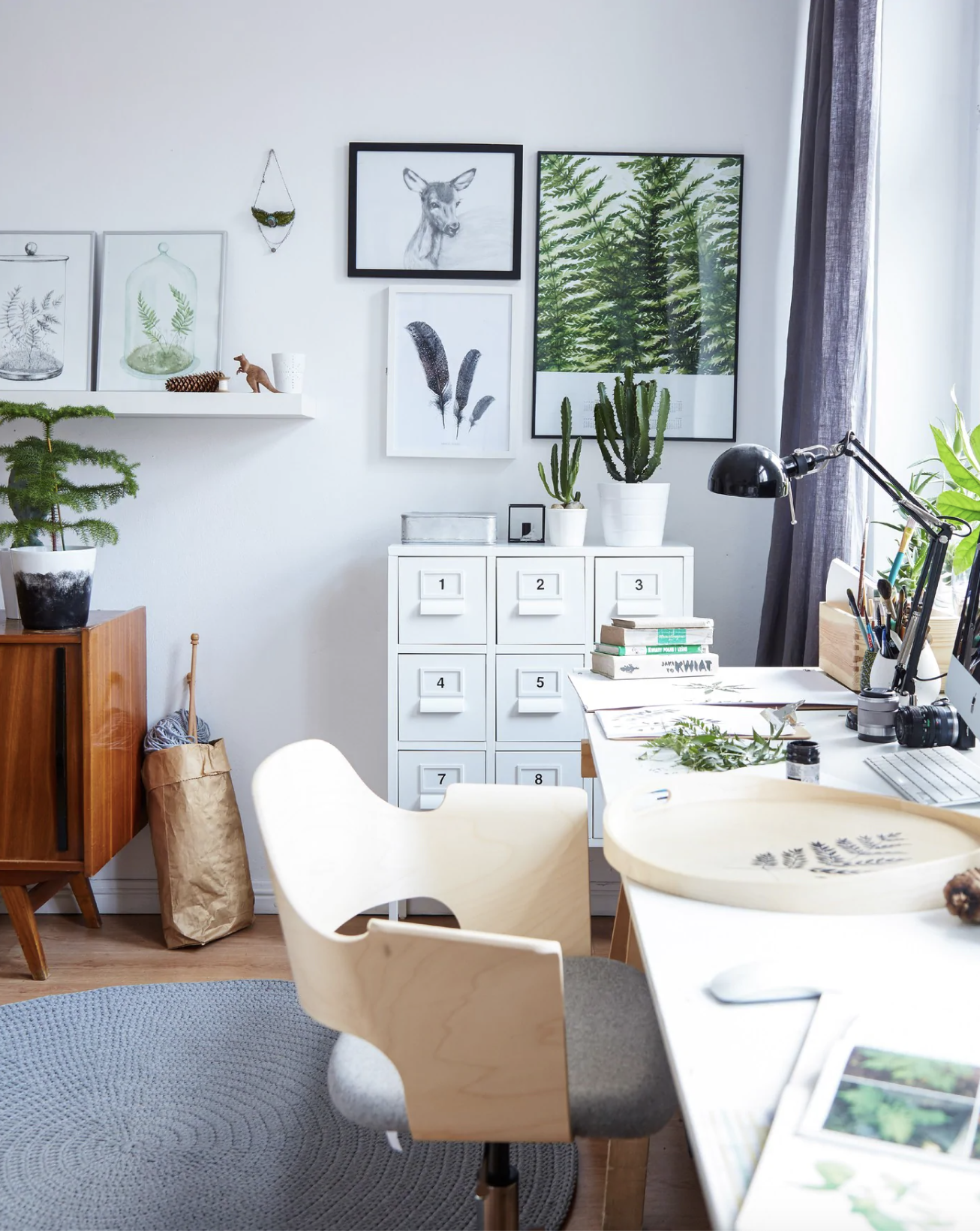
Choosing the best desk for your home office will involve considering how much space you have available in the room. The desktop needs to be big enough to accommodate your laptop or computer, while giving you space to take notes or sort files.
A corner desk will allow you to split the work station into two: one side for the computer, the other for paperwork. Be aware that integrated storage pillars (while incredibly useful) will dictate where you can sit and may affect achieving a comfortable working position. Like to be more mobile? A standing desk is worth considering.
Some desks have handy wire channels to keep your tangle of cables neatly out of the way. If your chosen desk does not, you will need to consider the placement of the desk for a neat and safe connection to plug sockets.
Pick a great office chair
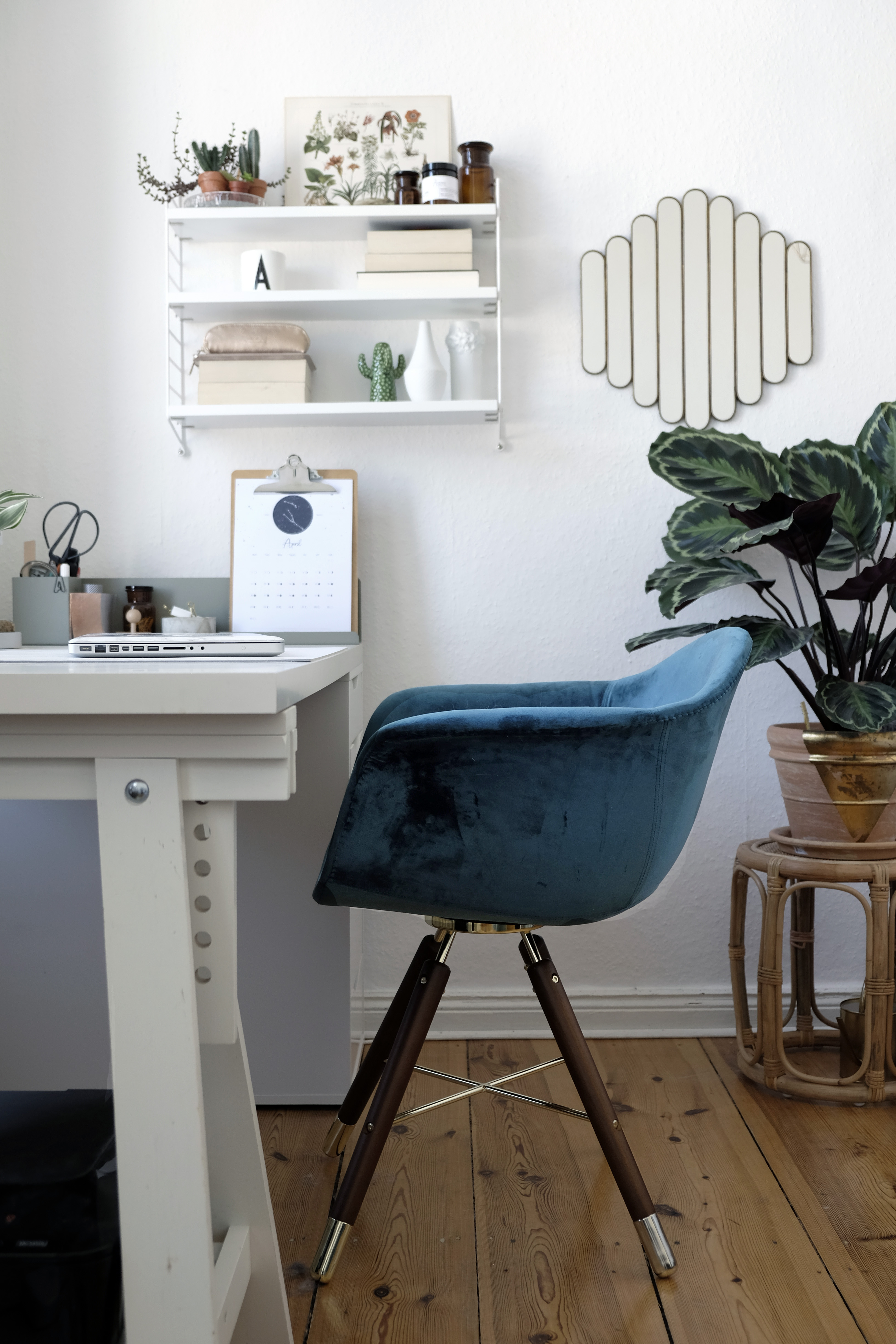
Match your office chair to the rest of the room’s furniture, rather than using a more typical office chair. But make sure it’s supportive and comfortable if you’re going to be sitting for hours. Opt for a swivel so you can adjust it to the right height.
The best office chair is a must for anyone sitting at a desk for any length of time. There is a wide choice online so it is easy to find something that is ergonomically designed and suits the look of your space.
Banish clutter with comprehensive office storage
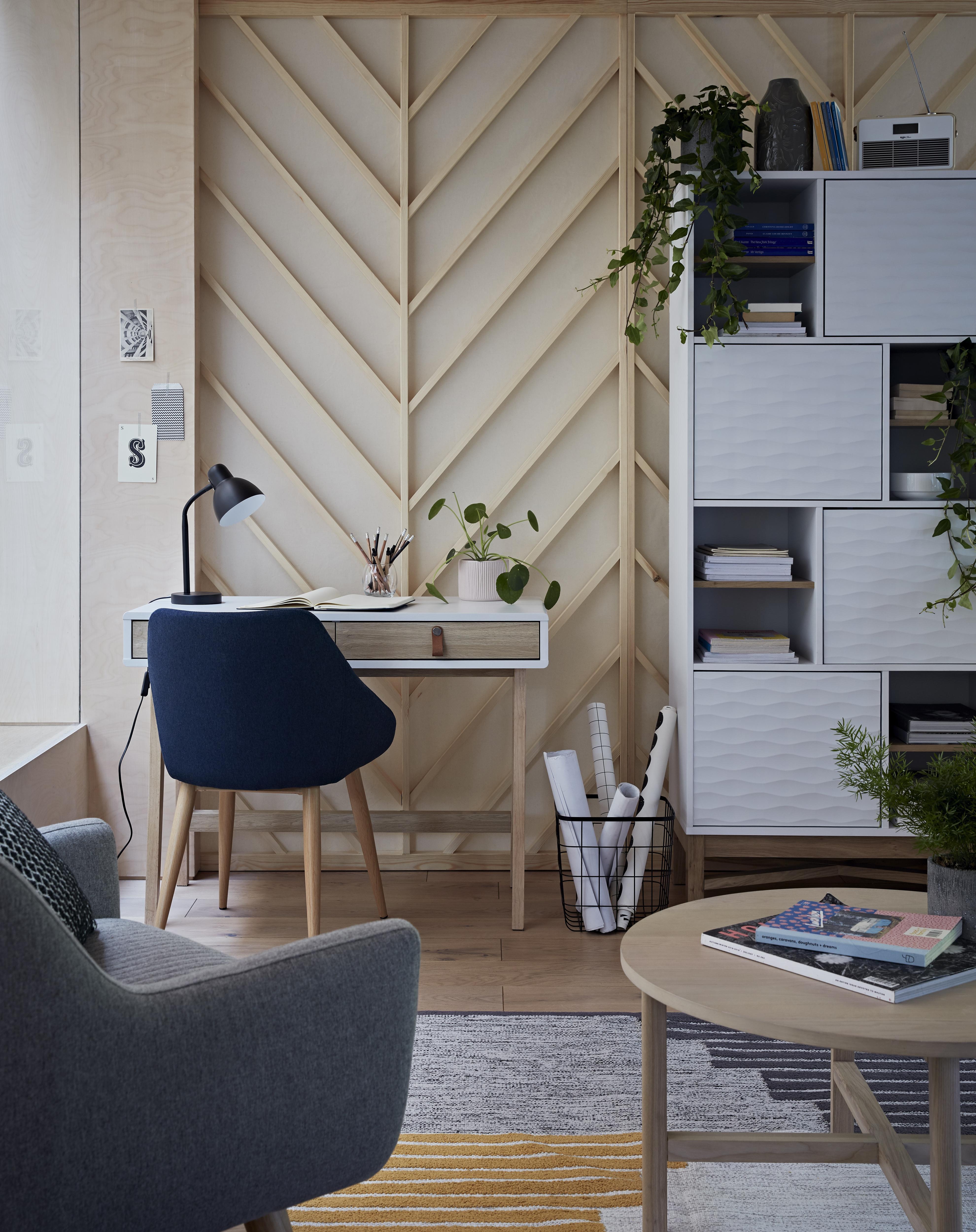
Clutter is at its most distracting in the home office area, and you will want to make sure that the space is as tidy as possible, with all important paperwork easily accessible. Choose home office storage, such as shelving and smaller home office storage accessories that are functional and stylish and will encourage you to keep everything where it should be.
You may also need to make room for office accessories such as the best small printers, scanners and document shredders. Think about whether you want these neatly packed away, or within easy reach on a worktop.
When you plan your fitted cupboards and units, make sure you allow enough room for displaying items that aren’t work-related. Shelving for treasured books and ornaments will all help create a space you want to be in, rather than have to be in.
Keep track of your goals with a noticeboard
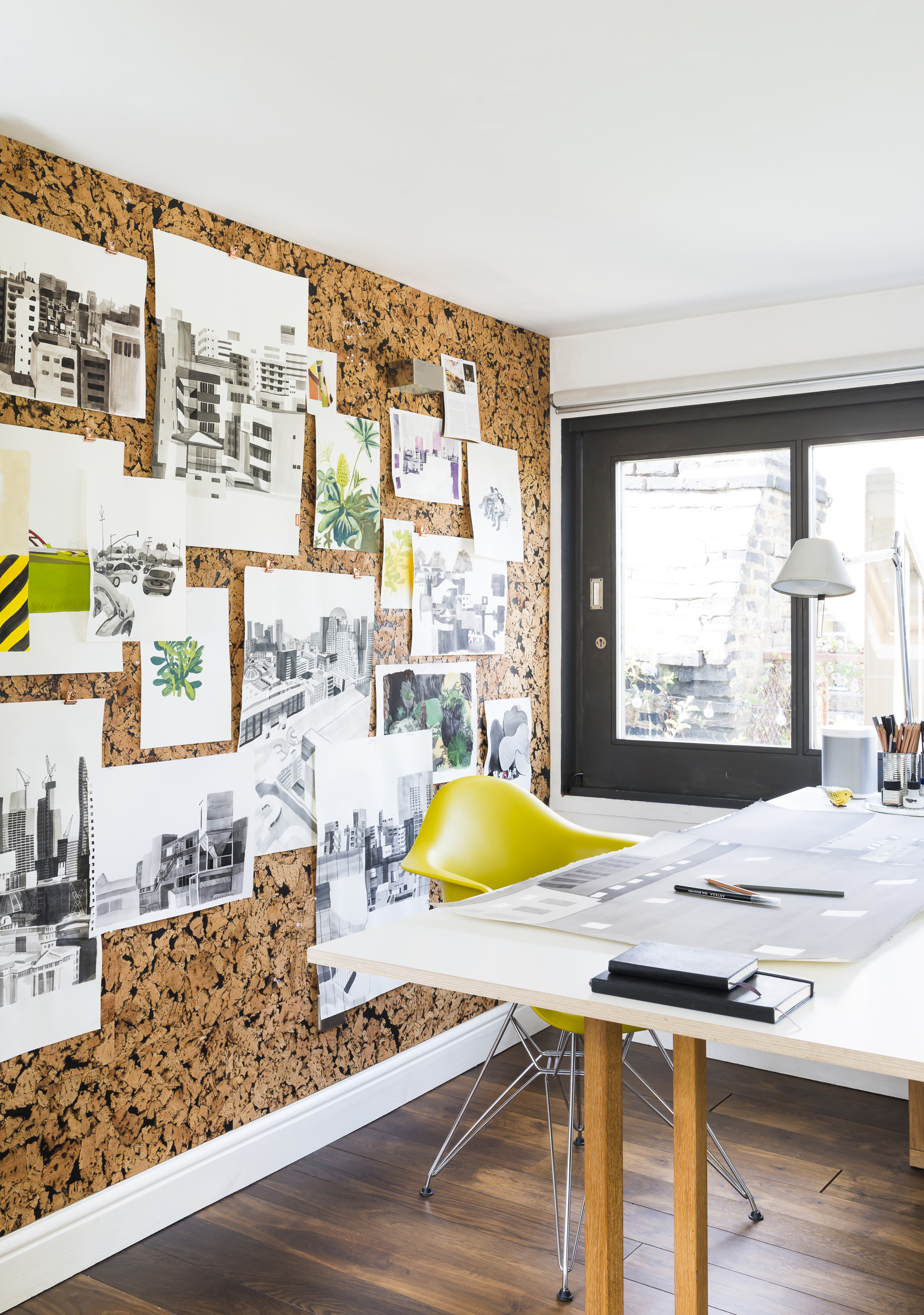
Noticeboards can be a great way to visualise your goals and achievements, as well as keep track of deadlines and to-do lists, while wall planners will ensure you never miss an appointment. Check out our pick of the best noticeboards.
Get home office lighting right
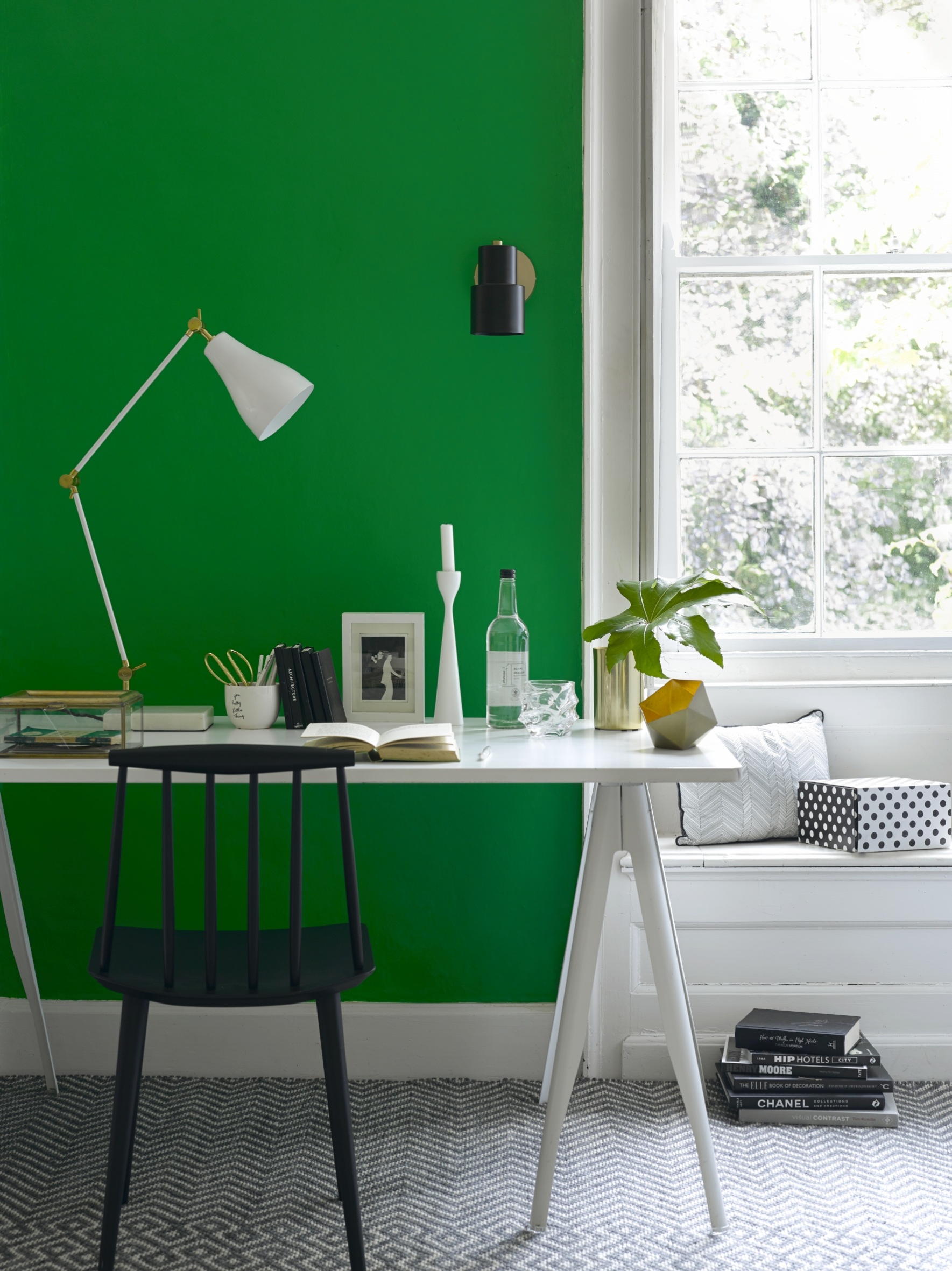
When planning the lighting for your home office design, remember to allow natural light in the room to blend in with your selected products. For homeworkers who use natural materials, position your desk close to the window to benefit from as much daylight as possible. If you’re working with computers or other screens, make sure you allow for the angles of natural light through the day and avoid glare.
A purpose-designed home office desk lamp is a must-have, but creating the right ambience in a home office is essential, and clever lighting is crucial to achieving it, too. Soften harsh light with a lampshade to set the mood and, if space is at a premium, pendant lighting is a good way to illuminate a room without cluttering it. Have a look at our pick of the best desk lamps.
Consider a fitted home office furniture
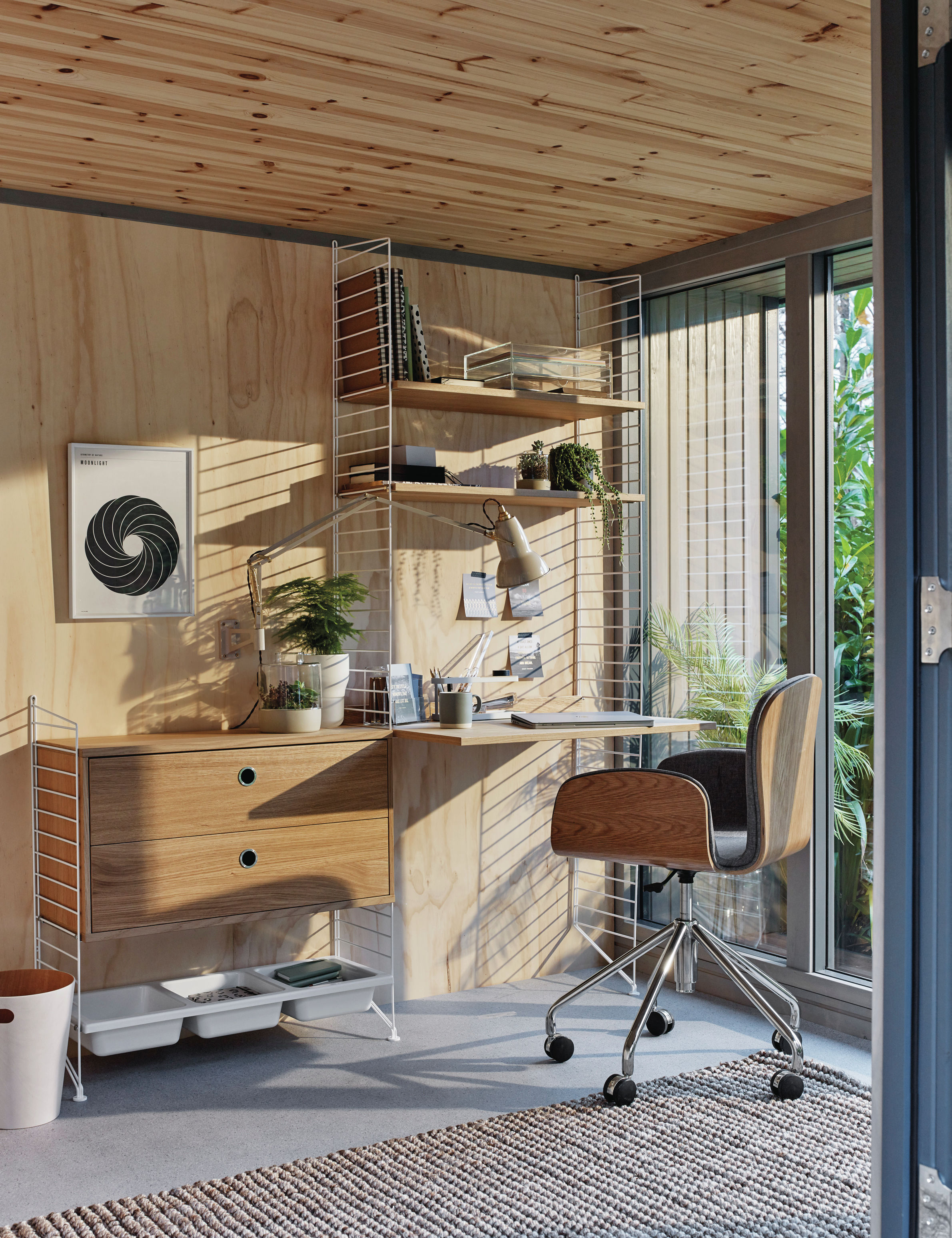
You may find that bespoke furniture is the best solution to creating a workspace that maximizes the available space. Built-in shelving and desks mean you can position everything exactly where you need it, and in accordance with existing features of the room (sockets, windows, doors and awkward alcoves or heaters).
Although more expensive than off-the-shelf options, custom furniture is worth the investment if you use the space every day. It can also be the best option for a multifunctional space, such as a guest room.
Dress your home office window practically
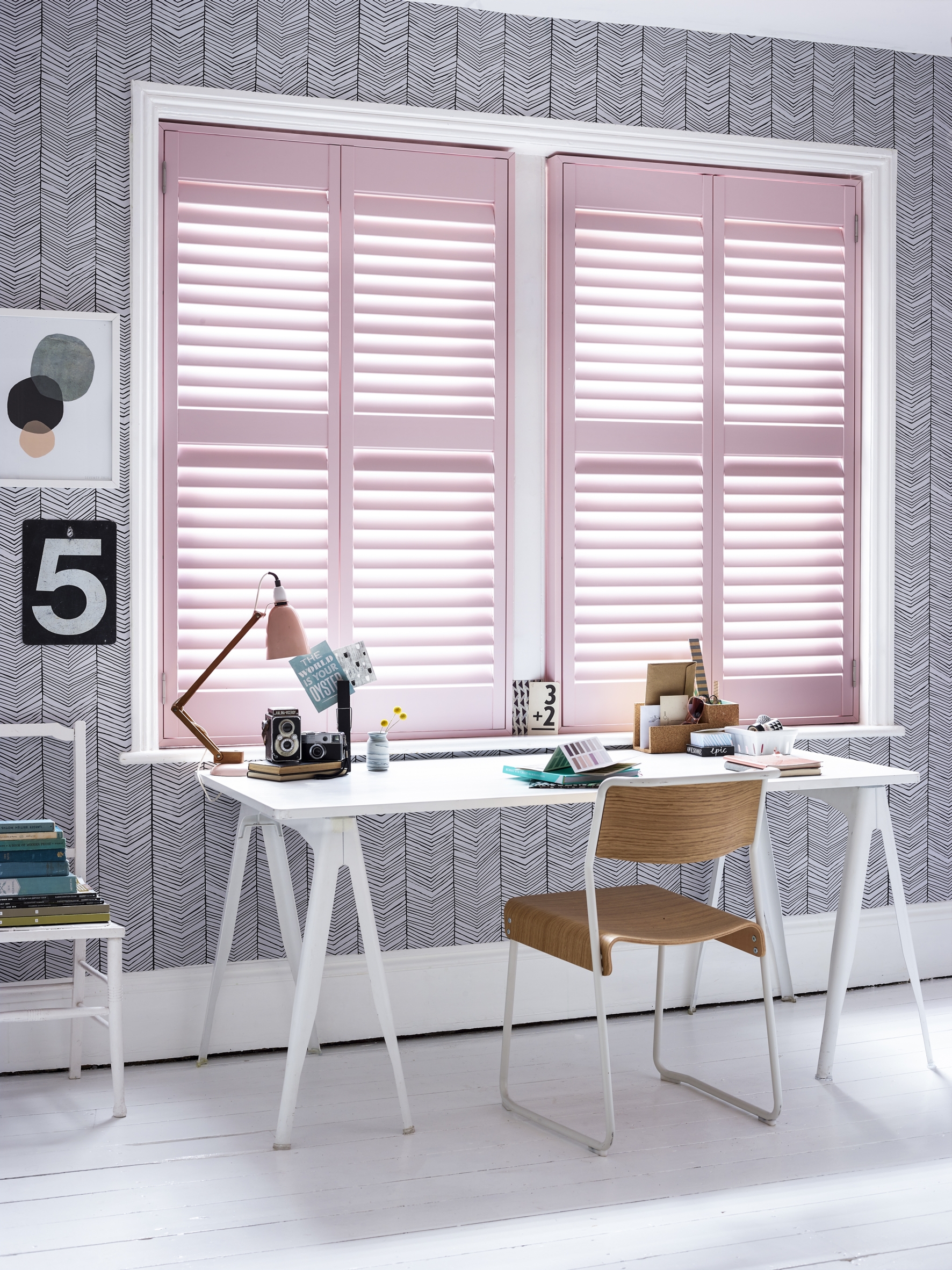
When designing your home office think carefully about your choice of window treatment. Shutters will allow you to control the amount of light coming in to your home office throughout the day. A light colored blind that blocks glare while still allowing in natural light might be a good option, too, if your computer screen is near a window.
If the room doubles as a bedroom, a blackout curtain that can be pulled over at night will ensure a restful sleep. We've rounded up some of our favorite home office window ideas, so head over there for more practical advice and inspiration.
Choose practical home office flooring

Hardwearing engineered wood flooring or laminate flooring are both good options when designing a home office. If you do want to add interest to the room with a rug or runner, choose one that is smooth in texture and dense in pile.
Build a garden office for ultimate privacy
Garden office building rules
1. It must be a single-storey.
2. It can only have a maximum eaves height of 2.5m.
3. It can only have a maximum overall height of 3m (Or 4m if the roof is dual pitched).
4. If your garden office is within 2m of a boundary, the maximum overall height is restricted to 2.5m.
For some types of work, only working in a completely separate space will do.
If your garden office is subordinate to the house and can’t function as an independent dwelling, then you should be able to construct it under permitted development if it is within certain dimensions.
Most garden offices are built at the edge of a garden, meaning that the maximum overall height is 2.5m. It is probably worth considering building your garden room with a flat roof to guarantee the best use of the space.
Ensure your garden office will have heating
A home office in a garden room should be designed for use all year round. If it is a space that you will be working in permanently you don’t want to be demotivated by the idea of walking to the bottom of the garden in bad weather. Chances are, you will need to divert services from your house to be able to work in the space.
Think about heating options like underfloor heating or radiators. Underfloor heating is a practical and cost effective way of heating a small space and should be easy to install in a new structure without taking up valuable wall space. Alternatively, radiators are a good solution if you have wall space to spare.
Plan the powering of your garden office
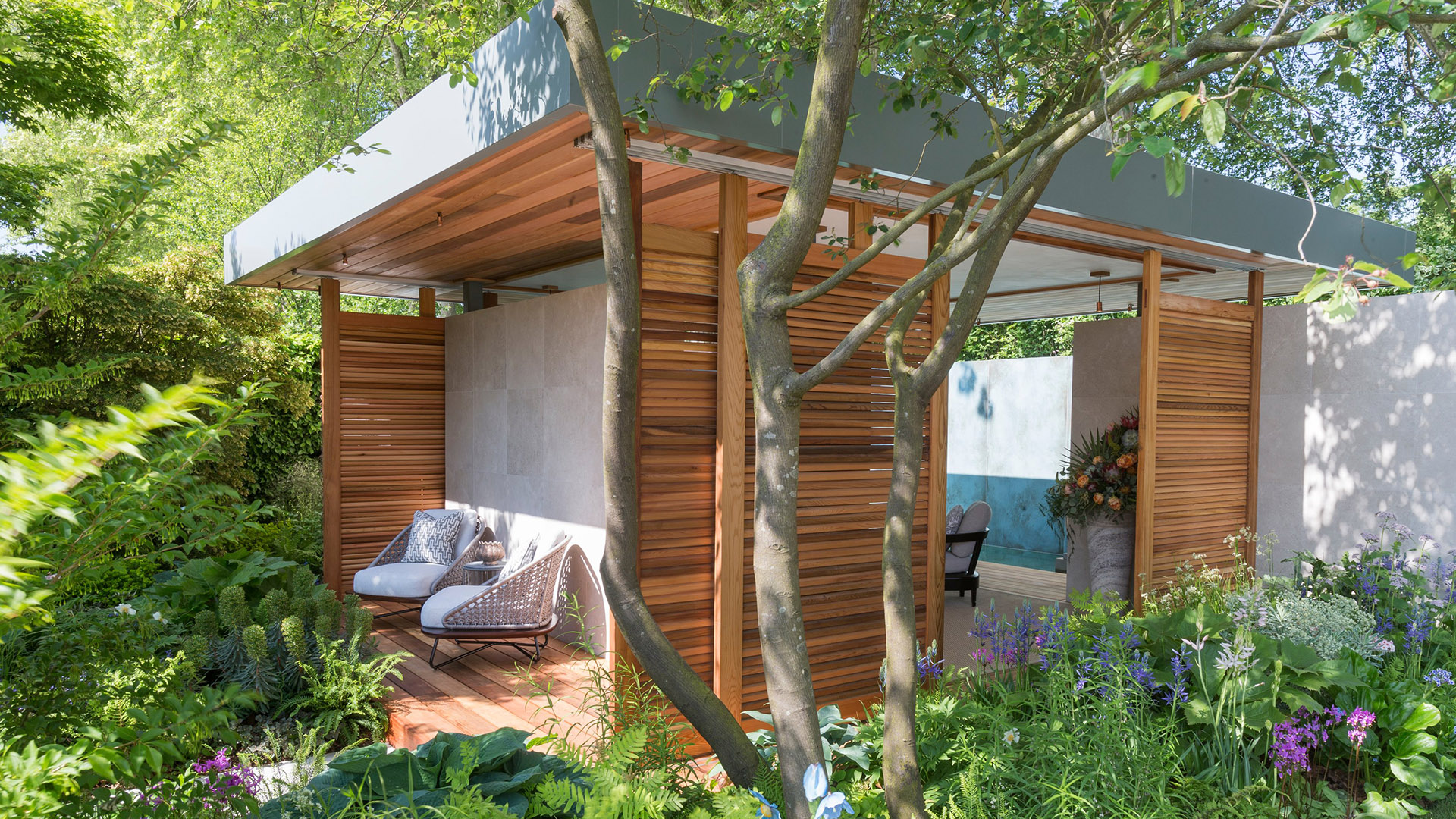
You will need to consult an electrician when it comes to powering your garden office. Not only should you think about where you should run insulated cabling through your garden, but you will also need to consider where you want to install power points and lighting in the structure itself.
Draw a scale floor plan of your home office on squared paper and plot where the important furniture, like your desk, reading chair or workstation will sit. Make sure these points have enough plug sockets to service everything that you need to work with.
Good lighting is also known to improve productivity, so make sure your garden office is well lit. In work areas, incorporate task lighting to light the space directly. Having a series of spotlights in the roof will ensure that the space is properly lit. If you’re going for a more relaxed work space, use a combination of table and floor lamps.
Be inspired by these beautiful summer house ideas.
Create a home office extension

Factoring a home office into an extension design is far easier than building an external garden office as you are already closer to your power and heat supplies. You should discuss these elements with your architect when you are planning the project from the start.
A new factor to consider is acoustics, especially within a busy household. To minimize distraction, place your office away from loud spaces like the living room, or insulate the room against sound as best you can.
lf your office has a lot of glazing, ensure blinds are installed to regulate natural lighting, shade and temperature. Extensions tend to be cooler than the rest of the house, so investing in underfloor heating might also be a viable solution to keep the area warm without installing radiators, which can encroach on space.
For more tips on planning and designing a single storey extension or double storey extension check out our guides.
Convert a garage into a home office

Got a garage that you barely use, just asking to be converted? Considered using the space to add a home office. Best sited away from the main living space if you have a family who will want the TV on while you try to work, it can also double up as a homework space, so having it near to where you’ll be most of the time can be very useful. It will need plenty of natural daylight to make it welcoming during the day, but invest in good blinds if it is south-facing, and ensure the heating is sufficient.
Have a read of our feature of how to convert a garage and check out more garage conversion ideas for more tips.
Don't let an awkward space deter you
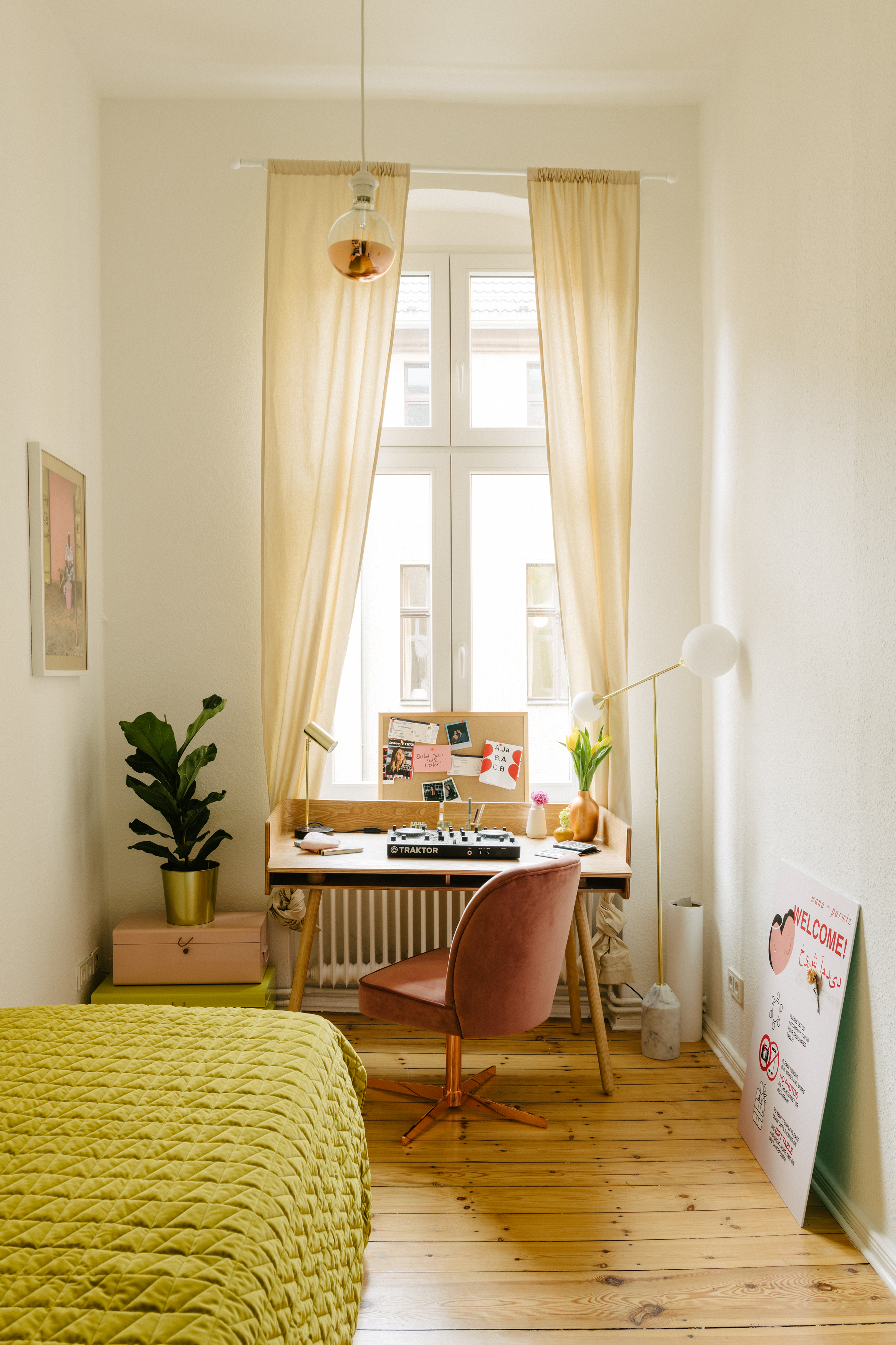
If you can’t add a new home office, being creative with existing small space might be the solution. Hallways and landings that are often thought of as being unusable can actually be a perfect place to create a small home office.
If you have a small nook under the stairs, a hallway or even the living room, it could be suitable to neatly fit a small desk and a chair without it encroaching on the space itself.
See more under stair storage solutions in our guide. Find out how to create an alcove office, too, if you're even more pushed for space.
Read more:
- For more decorating advise check out these inspiring home offices
- Check out these Mid-century home office design ideas
- Like a traditional-style home office? We have 22 traditional home office design ideas

Lindsey is Editor of Realhomes.com and Editor in Chief for Home Ecommerce at Future. She is here to give you aspirational, yet attainable ideas for your home and works with her team to help you get the best buys, too. She has written about homes and interiors for the best part of a decade for brands including Homes & Gardens, Ideal Home and Gardeningetc and isn't afraid to take the inspiration she finds at work into her own space – a Victorian terrace which she has been (slowly) remodelling for the last eight years. She is happiest sipping a cup of tea with a cat on her lap (if only she had a cat).